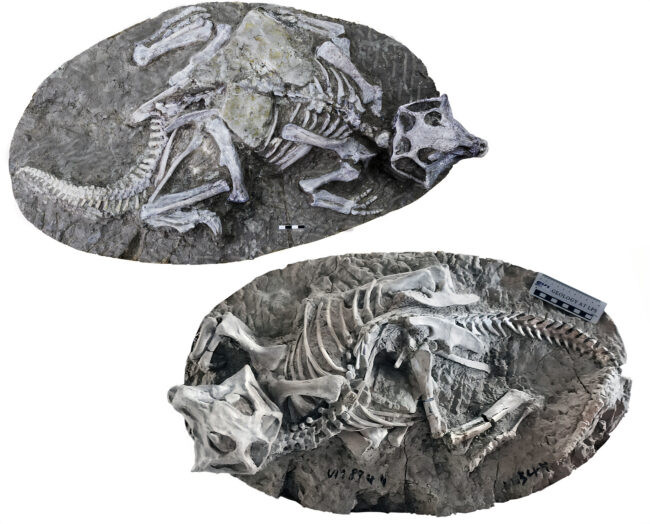2024-11-13 パシフィック・ノースウェスト国立研究所(PNNL)
<関連情報>
- https://www.pnnl.gov/news-media/how-clean-does-quantum-computing-test-facility-need-be-pnnl-scientists-show-way
- https://journals.aps.org/prxquantum/abstract/10.1103/PRXQuantum.5.040323
- https://iopscience.iop.org/article/10.1088/1748-0221/19/09/P09001
自然電離放射線による量子回路基板へのエネルギー蓄積の分光測定とモデル化 Spectroscopic Measurements and Models of Energy Deposition in the Substrate of Quantum Circuits by Natural Ionizing Radiation
Joseph W. Fowler, Paul Szypryt, Raymond Bunker, Ellen R. Edwards, Ian Fogarty Florang, Jiansong Gao, Andrea Giachero, Shannon F. Hoogerheide, Ben Loer, H. Pieter Mumm, Nathan Nakamura, Galen C. O’Neil, John L. Orrell, Elizabeth M. Scott, Jason Stevens, Daniel S. Swetz, Brent A. VanDevender, Michael Vissers, and Joel N. Ullom
PRX Quantum Published 12 November 2024
DOI:https://doi.org/10.1103/PRXQuantum.5.040323
Abstract
Naturally occurring background radiation is a potential source of correlated decoherence events in superconducting qubits that will challenge error-correction schemes. In order to characterize the radiation environment in an unshielded laboratory representative of superconducting qubits’ environments, we performed broadband, spectroscopic measurements of background radiation events inside a millikelvin refrigerator. The spectrometer was designed to mimic the size and composition of a quantum circuit. Specifically, we measured the background radiation spectra in silicon substrates of two thicknesses, 500 and 1500 µm, and one area, 25 mm2. The observed spectra span energies from a few kilo-electron-volts up to nearly 10 MeV, are nearly featureless, and decrease in intensity by a factor of 40 000 between 100 keV and 3 MeV for the 500-µm substrate. We integrate the spectra to obtain the average event rates and deposited power levels. These quantities correspond to a rate of 0.023 events per second and a power of 4.9 keV s−1, when counting events that deposit at least 40 keV for the 500-µm-thick substrate. We find that the cryogenic measurements are in good agreement with predictions based on simple measurements of the terrestrial gamma-ray flux outside the refrigerator, published models of cosmic-ray fluxes, a crude model of the cryostat, and radiation-transport simulations. This model requires no free parameters to predict the background radiation spectra in the silicon substrates. The agreement between measurements and predictions demonstrates that the model we present can be used to assess the relative contributions of terrestrial and cosmic-ray sources to background radiation interactions in silicon substrates of varying thickness. These spectroscopic measurements are performed with a novel combination of superconducting microresonators located on micromachined silicon islands that define the interaction volume with background radiation. The resonators transduce deposited energy to a readily detectable electrical signal. Microresonator readout closely resembles dispersive superconducting qubit readout, so similar devices—with or without micromachined islands—are suitable for integration with superconducting quantum circuits as detectors for background radiation events. For our specific laboratory conditions, we find that gamma-ray emissions from radioisotopes are responsible for the majority of events that deposit <1MeV. We present results demonstrating that the background radiation spectrum contains relevant contributions from cosmic-ray particles other than muons, particularly a tail of multi-mega-electron-volt events due to protons and neutrons. These observations suggest several paths to reducing the impact of background radiation on quantum circuits, supported by an empirically validated model for generating reliable predictions of radiation interactions with silicon substrates.
超伝導量子デバイスのための電離放射線の低減 Abatement of ionizing radiation for superconducting quantum devices
B. Loer, P.M. Harrington, B. Archambault, E. Fuller, B. Pierson, I.J. Arnquist, K. Harouaka, T.D. Schlieder, D.K. Kim, A.J. Melville,…
Journal of Instrumentation Published: 2 September 2024
DOI:10.1088/1748-0221/19/09/P09001
Abstract
Ionizing radiation has been shown to reduce the performance of superconducting quantum circuits. In this report, we evaluate the expected contributions of different sources of ambient radioactivity for typical superconducting qubit experiment platforms. Our assessment of radioactivity inside a typical cryostat highlights the importance of selecting appropriate materials for the experiment components nearest to qubit devices, such as packaging and electrical interconnects. We present a shallow underground facility (30-meter water equivalent) to reduce the flux of cosmic rays and a lead shielded cryostat to abate the naturally occurring radiogenic gamma-ray flux in the laboratory environment. We predict that superconducting qubit devices operated in this facility could experience a reduced rate of correlated multi-qubit errors by a factor of approximately 20 relative to the rate in a typical above-ground, unshielded facility. Finally, we outline overall design improvements that would be required to further reduce the residual ionizing radiation rate, down to the limit of current generation direct detection dark matter experiments.



